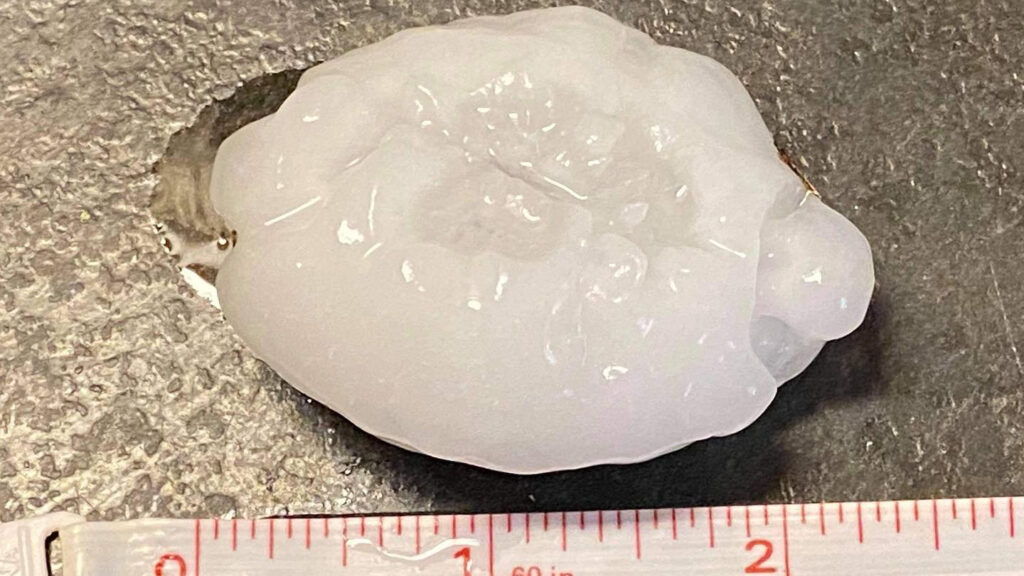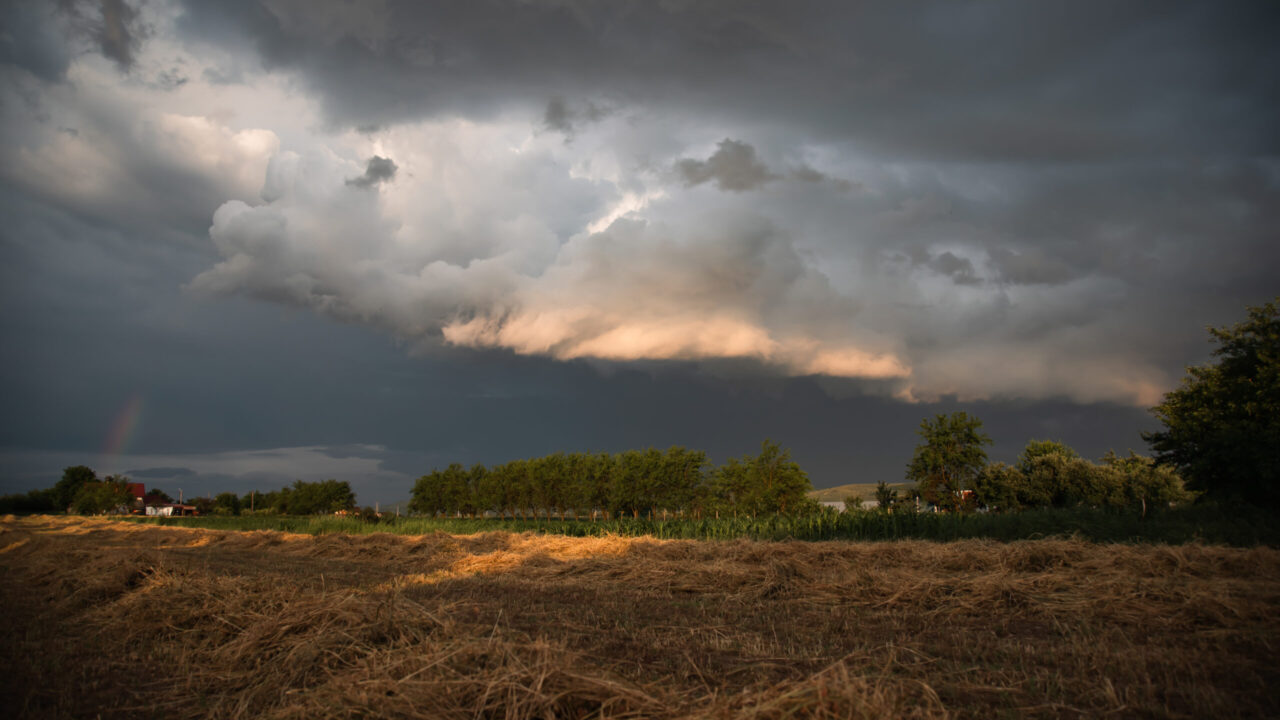Severe Weather Awareness Week in Alabama is Feb. 5-9. Throughout the week, the University will share information that you can use to help you stay safe when severe weather strikes.
Along with tornadoes and flooding, severe thunderstorms are another weather event that we frequently deal with in Alabama.
A thunderstorm forms when warm, moist air rises into cold air and condenses into rain with lightning occurring from within a cumulonimbus cloud. A thunderstorm is classified as severe when it is capable of producing wind gusts greater than 58 mph, or hail that is one inch or larger in diameter, which is about the size of a quarter. Hail that size and larger can destroy crops, roofs, and vehicles, and even cause human casualties.
#DYK: The largest hailstone recorded in Alabama fell on March 19, 2018, in Cullman County. The hailstone was more than five inches in width and weighed almost 10 ounces.

Straight-line winds are also commonly associated with severe thunderstorms. These high winds can do the same type of damage caused by a tornado, knocking down trees and power lines or destroying manufactured homes.
When severe thunderstorms are possible, the National Weather Service will issue a Severe Thunderstorm Watch. A watch means you should pay attention to the weather and be prepared to move to a location in a sturdy building if a severe thunderstorm occurs.
When a Severe Thunderstorm Watch is issued for Tuscaloosa County, information about the watch will be displayed in the UA Safety app.
If a severe thunderstorm is reported or has been indicated on weather radar, a Severe Thunderstorm Warning will be issued. When a Severe Thunderstorm Warning is issued that includes campus, a UA Alert will be sent.
During a Severe Thunderstorm Warning, you should:
- Seek shelter in a sturdy building, but not in a manufactured home.
- Bring pets inside if you can.
- Once inside, stay away from windows, and don’t use electrical appliances or take a shower or bath.
- Postpone your outdoor activities until the storms have passed.
